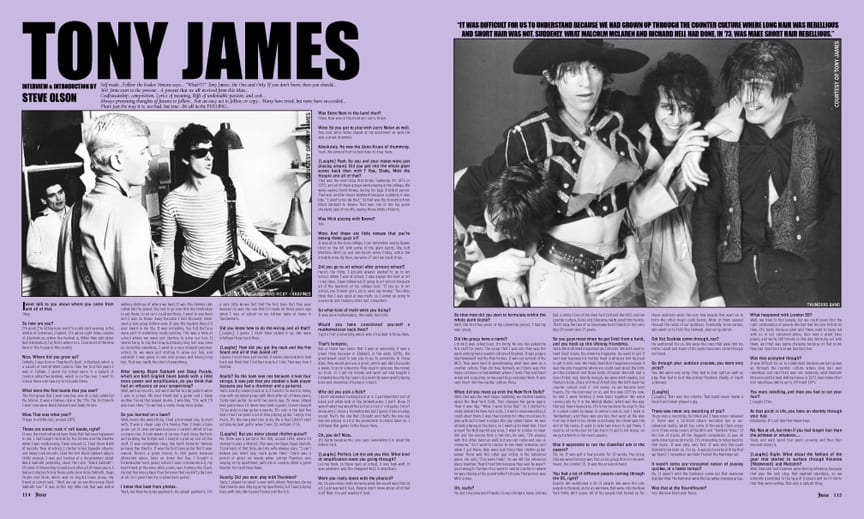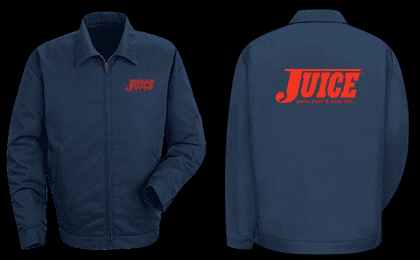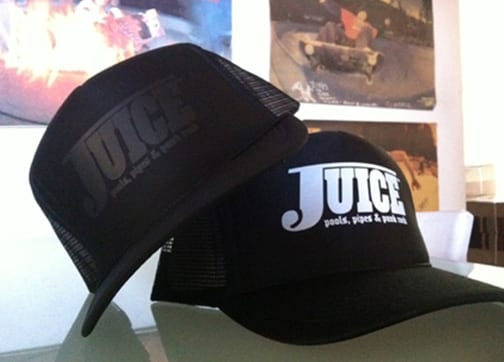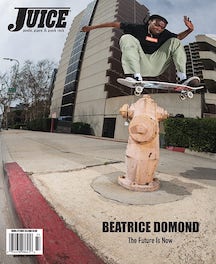INTERVIEW BY STEVE OLSON
INTRODUCTION BY STEVE OLSON
PHOTOS COURTESY OF TONY JAMES
Self made…Follow the leader. Simons says… “What???” Tony James, the One and Only. If you don’t know, then you should… 360, from start to the present… A present that we all received from this Man… Craftsmanship, composition, Lyrics of meaning, Riffs of undeniable passion, and cool… Always presenting thoughts of futures to follow… Not an easy act to follow, or copy… Many have tried, but none have succeeded… That’s just the way it is, too bad, but true…It’s all in the FEELING…
“IT WAS DIFFICULT FOR US TO UNDERSTAND BECAUSE WE HAD GROWN UP THROUGH THE COUNTER CULTURE WHERE LONG HAIR WAS REBELLIOUS AND SHORT HAIR WAS NOT. SUDDENLY, WHAT MALCOLM MCLAREN AND RICHARD HELL HAD DONE, IN ‘73, WAS MAKE SHORT HAIR REBELLIOUS.”
I want talk to you about where you came from and all of that.
Okay.
So how are you?
I’m good. I’m sitting here and it’s a cold dark evening in the middle of Somerset, England. I’m about eight miles outside of Glastonbury, where the festival is. When they talk about that Glastonbury Tor, that’s where it is. I live most of the time here in this house in the country.
Nice. Where did you grow up?
Initially, I was born in Shepherd’s Bush, in England, which is a suburb of central West London. Then the first five years I was in Fulham. I spent my school years in a suburb of London called Twickenham, which is on the river. I went to school there and saw my first bands there.
What were the first bands that you saw?
The first group that I ever saw live, was at a club called Eel Pie Island. It was a famous club in the ‘70s. The first bands I ever saw were Black Sabbath and Deep Purple.
Wow. That was what year?
It was in a little club, around 1970.
Those are iconic rock n’ roll bands, right?
It was the most extraordinary thing that had ever happened to me. I had bought records by the Stones and the Beatles when I was really young. I was around 11. I had those kinds of records. Then at school, I started to buy Zeppelin albums, and heavy rock records. I had the first Black Sabbath album. Oddly enough, I was just looking at a documentary about Black Sabbath yesterday, about the track “Black Sabbath”. It’s kind of interesting to look back after all of these years. I had just started to buy those early records by Sabbath, Deep Purple and Taste, which was an English blues group. My friend at school said, “Well, we can go see this group Black Sabbath live.” It was at this tiny little club that was within walking distance of where we lived. It was this famous club called Eel Pie Island. You had to go over this tiny footbridge to get there, so no cars could get there. I went to see them and I was so blown away because I had obviously never seen a live group before ever. It was the loudest thing I’d ever heard in my life. It was incredible. You felt that you were part of something really exciting. This was a time at school where we were just starting to grow our hair. It seems funny to say that now, but having long hair was seen as incredibly rebellious. I went to a very straight grammar school. So we were just starting to grow our hair, and suddenly I was going to see rock groups and having long hair. That was really the start of everything.
After seeing Black Sabbath and Deep Purple, which are both English blues bands with a little more power and amplification, do you think that had an influence on your songwriting?
Well, we had records, and we’d started to play guitars when I was in school. My best friend had a guitar and I knew another friend that played drums. I was like, “Oh, well, I’ll play bass then.” So we had a really cheap bass guitar.
So you learned on a bass?
Well, here’s the weird thing. I had a borrowed one, to start with. It was a cheap copy of a Fender. Then I made a bass guitar out of clear perspex because I couldn’t afford to buy a proper one. It took weeks of carving it and doing the frets and building the bridge and I bought a pick-up and all this stuff. It was completely clear, like Keith Richards’ famous perspex Dan Electro. It was the first bass guitar that I ever owned. There’s a great history to that guitar because ultimately when, later on down the line, I bought a Rickenbacker bass guitar, before I was in Generation X, my best friend at the time, Mick Jones, was forming the Clash. He had this bass player Paul Simonon that couldn’t play bass at all. So I gave Paul my original bass guitar.
I know that bass from photos.
Yeah, but then he spray-painted it. He splash painted it. It’s a very little known fact that the first bass that Paul ever learned on was the one that I’d made all those years ago when I was at school on my kitchen table at home in Twickenham.
Did you know how to do the wiring and all that?
[Laughs] I guess I must have picked it up. We were intelligent boys back then.
[Laughs] How did you get the neck and the fret board and all of that dialed in?
I guess I must have just carved. It seems impossible to look back and think that I did that now, but I did. That was how I started.
Really? So the bass was not because it was four strings. It was just that you needed a bass player because you had a drummer and a guitarist.
Yeah. Exactly. Looking back at it, if I wind it forward to today, now with my latest group with Mick after all of these years, I play lead guitar. Up until five years ago, I’d never played lead guitar ever. I’d never even held a guitar. I never thought I’d be able to play guitar properly. It’s only in the last five years that I’ve spent a lot of time playing guitar. I enjoy it so much. It’s the one great loss in my life is that I didn’t start out playing lead guitar when I was 18, instead of 54.
[Laughs] But you never played rhythm guitar?
No. There was a period in the ‘80s, around 1984, where I’d started to play a little bit. This was pre-Sigue Sigue Sputnik. I look back at that time, and my wife always says, “I can’t believe you didn’t play more guitar then.” There was a period of about six weeks when Johnny Thunders was staying at my apartment, with me in London. What a great teacher he could have been.
Exactly. Did you ever play with Thunders?
Yeah. I played for about a year with Johnny Thunders during that time he was staying at my apartment, but I was playing bass with him. We toured France and the U.K.
Was Steve New in the band then?
Steve New was in the band and Jerry Nolan.
Wow. So you got to play with Jerry Nolan as well.
Yes. And Jerry Nolan stayed at my apartment as well. He was a great drummer.
Absolutely. He was the Gene Krupa of drumming.
Yeah. We jumped from school days to drug haze.
[Laughs] Yeah. So you and your mates were just playing around. Did you get into the whole glam scene back then with T Rex, Slade, Mott the Hoople and all of that?
That was the next thing that broke. Suddenly, it’s 1971 or 1972, and all of these groups were playing at my college. We were seeing David Bowie, during his Iggy Stardust period. That was another major landmark because suddenly, it was like, “I want to be like that.” So that was the transition from Black Sabbath to Bowie. That was one of the big game changing gigs of my life, seeing those kinds of bands.
Was Mick playing with Bowie?
Yes.
Wow. And these are little venues that you’re seeing these guys in?
It was all at the local college. I can remember seeing Queen third on the bill with some of the glam bands, like Soft Machine. We’d go and see bands every Friday, within the drivable area. By then, we were 17 and we could drive.
Did you go to art school after primary school?
Here’s the thing. I actually always wanted to go to art school. When I was at school, I was always the best at art in my class. I was talked out of going to art school, because all of the teachers at my college said, “If you go to art school, you’ll never get a job or earn any money.” The other thing that I was good at was math, so I ended up going to university and studying math and computers.
So what kind of math were you doing?
It was pure mathematics, the really hard shit.
Would you have considered yourself a mathematician back then?
I got a first a university, which was a big deal in those days.
That’s fantastic.
But in those four years that I was at university, it was a great thing because in England, in the early 1970s, the government used to pay you to go to university. In those days, they would give you a grant, which was like 10 pounds a week, to go to university. They used to give you the money up front, so I got my money and went out and bought a Rickenbacker. My four years at university were spent playing bass and dreaming of being in a band.
Why did you pick a Rick?
I don’t remember looking back at it. I just liked that sort of black and white look of the Rickenbacker. I don’t know. It wasn’t what one would think of as a rock n’ roll guitar. I don’t know why I chose a Rickenbacker, but I guess it has an edgy sound. That’s the one that I bought and that’s the one you see me playing in all of the Generation X photos later on. I still have that guitar in the house here.
Oh, you do? Nice.
It’s funny because the case says Generation X in great big letters on it.
[Laughs] Perfect. Let me ask you this. What kind of amplification were you going through?
Let me think. In those days at school, it was high-watt. It was whatever was the cheapest 4×12 in amplifiers.
Were you really down with the phonics?
No. Do you mean really knowing what the sound was? Not at all. I just wanted it loud. People didn’t know about all of that stuff then. You just wanted it loud.
So then how did you start to formulate within the whole punk scene?
Well, the first few years of my university period, I had my own group.
Did the group have a name?
I think it was called Suun. It’s funny. No one has asked me this stuff for years. The group that I was into then was the early underground counter culture of England. It was groups like Hawkwind and the Pink Fairies. It was our version of the MC5. They were kind of spearheading what was seen as a counter culture. They did free festivals and there was this hippy commune in Twickenham where I lived. They had band areas and a gig area, so we used to go and play there. It was very much into the counter culture thing.
When did you meet up with the New York Dolls?
Well, that was the next stage. Suddenly, we started reading about the New York Dolls. That changed the game again. Then it was like, “Wow. I want to be that.” So I started to really idolize the New York Dolls. I tried to read everything I could about them. I was then looking for other musicians to play with and I meet a singer, this guy called Calvin. He was already playing in this band, so I went up to meet him. I met around the Notting Hill gay area. I went to London to meet him and the second time I met him, he said, “I’m playing with this other band as well, but you can come and see us rehearse.” So I went to London to see them rehearse, and when I got there, they were just firing their rhythm guitar player. There was this other guy sitting in the rehearsal place. He said, “I’ve been fired.” So we left the rehearsal place together. They’d fired him because they said he wasn’t good enough. The two of us went to central London to where he was staying at his grandmother’s house. That person was Mick Jones.
Oh, really?
He and I became best friends. So we started a band, and we had a similar love of the New York Dolls and the MC5 and the counter culture. So he and I became really good firm friends. That’s how the two of us have been best friends to this very day. It’s been over 35 years.
FOR THE REST OF THE STORY, ORDER ISSUE #67 BY CLICKING HERE…
SHARE THIS POST:
- Click to email a link to a friend (Opens in new window)
- Click to share on Tumblr (Opens in new window)
- Click to share on LinkedIn (Opens in new window)
- Click to share on Pinterest (Opens in new window)
- Click to share on Twitter (Opens in new window)
- Click to share on Facebook (Opens in new window)
- Click to share on Reddit (Opens in new window)
- Click to print (Opens in new window)











